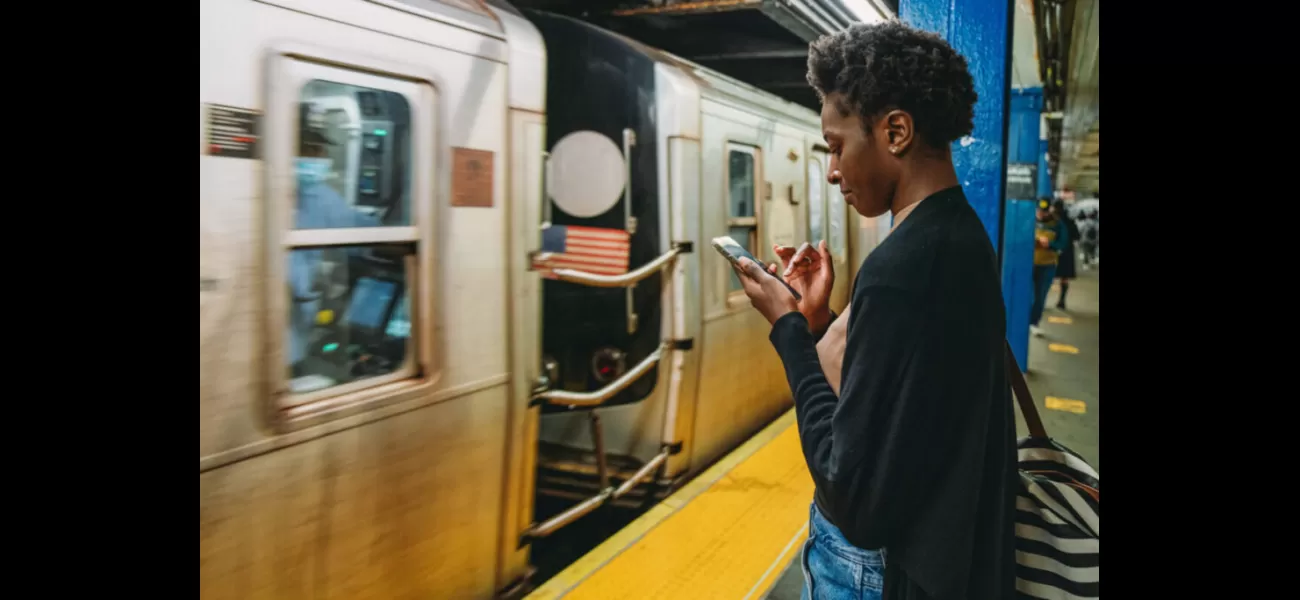NYC subway air is dangerous for riders.
A study found toxic air in NYC subways harmful for residents.
August 9th 2024.

A new study has recently been released, shining light on a concerning issue for New York City subway commuters. The findings reveal that the air they are breathing in may be toxic, especially for the city's Black and Latino population.
According to Bloomberg, the report published by PLOS One addresses the high levels of a hazardous air pollutant known as PM2.5. This dangerous fine-particle pollution was found to be "exceptionally high" on both subway platforms and train cars, as stated in a comprehensive study on the air quality of New York City.
The New York State Department of Health defines PM2.5 as particle pollution made up of fine particulates. Inhaling high levels of PM2.5 can increase the risk of health issues such as heart disease, asthma, and low birth weight. It can also cause haziness in the air, reducing visibility.
The study concluded that the average concentrations of PM2.5 on subway platforms and train cars were 10 and 7 times higher than the 24-hour guideline set by the World Health Organization. "The particulate concentration was quite high, a lot higher than one would want to imagine," stated Masoud Ghandehari, a professor in NYU Tandon's Civil and Urban Engineering Department and leader of the research team.
The study focused on the commute patterns of 3.1 million workers from four boroughs of New York City. It was found that commuters with longer travel times on the subway were more exposed to PM2.5. The researchers also discovered that the friction of metal wheels and brakes on the subway rails released metal particles into the air. These particles then accumulated when trains arrived at a station, causing a spike in PM2.5 levels.
Ghandehari explained, "We noticed that when a train arrives at the station, the concentration in the air shoots up, and about 15-20 seconds after it leaves, the concentration slowly comes down. This implies that it is the stuff at the bottom of the tunnel that gets churned up and deteriorates the air."
Furthermore, the study revealed that minority and low-income communities face the highest exposure to PM2.5. Black workers were found to have 35% higher exposure levels than Asian and white workers, while Hispanic workers had a 23% higher exposure level.
In response to the study, MTA Communications Director Tim Minton raised some doubts and stated, "Every serious person knows transit is the antidote to climate change, the one reason NYC is the greenest city around, and an engine of equity for people of all communities who need an affordable, safe way to get to jobs, schools, and opportunities of every kind."
According to Bloomberg, the report published by PLOS One addresses the high levels of a hazardous air pollutant known as PM2.5. This dangerous fine-particle pollution was found to be "exceptionally high" on both subway platforms and train cars, as stated in a comprehensive study on the air quality of New York City.
The New York State Department of Health defines PM2.5 as particle pollution made up of fine particulates. Inhaling high levels of PM2.5 can increase the risk of health issues such as heart disease, asthma, and low birth weight. It can also cause haziness in the air, reducing visibility.
The study concluded that the average concentrations of PM2.5 on subway platforms and train cars were 10 and 7 times higher than the 24-hour guideline set by the World Health Organization. "The particulate concentration was quite high, a lot higher than one would want to imagine," stated Masoud Ghandehari, a professor in NYU Tandon's Civil and Urban Engineering Department and leader of the research team.
The study focused on the commute patterns of 3.1 million workers from four boroughs of New York City. It was found that commuters with longer travel times on the subway were more exposed to PM2.5. The researchers also discovered that the friction of metal wheels and brakes on the subway rails released metal particles into the air. These particles then accumulated when trains arrived at a station, causing a spike in PM2.5 levels.
Ghandehari explained, "We noticed that when a train arrives at the station, the concentration in the air shoots up, and about 15-20 seconds after it leaves, the concentration slowly comes down. This implies that it is the stuff at the bottom of the tunnel that gets churned up and deteriorates the air."
Furthermore, the study revealed that minority and low-income communities face the highest exposure to PM2.5. Black workers were found to have 35% higher exposure levels than Asian and white workers, while Hispanic workers had a 23% higher exposure level.
In response to the study, MTA Communications Director Tim Minton raised some doubts and stated, "Every serious person knows transit is the antidote to climate change, the one reason NYC is the greenest city around, and an engine of equity for people of all communities who need an affordable, safe way to get to jobs, schools, and opportunities of every kind."
[This article has been trending online recently and has been generated with AI. Your feed is customized.]
[Generative AI is experimental.]
0
0
Submit Comment





